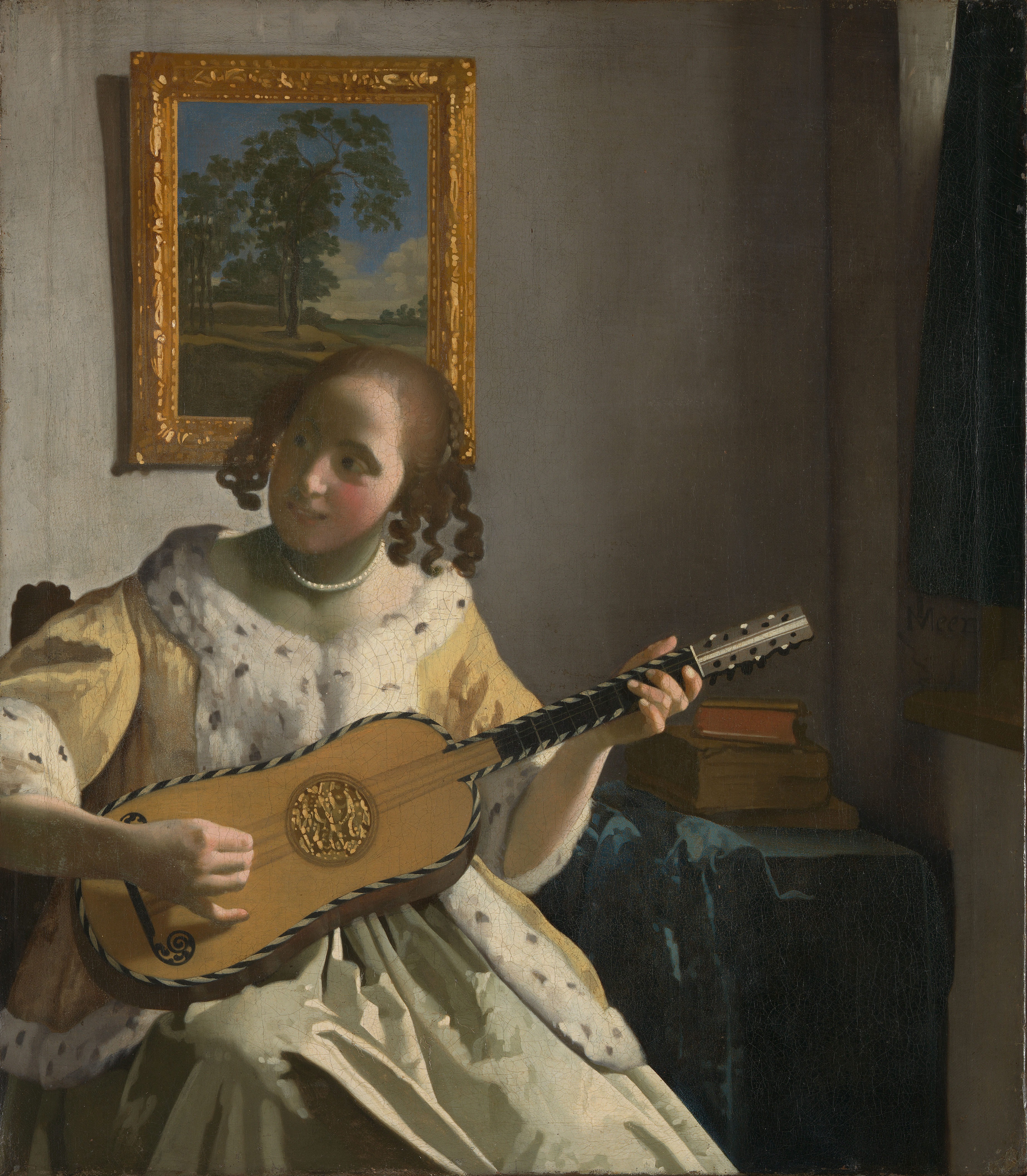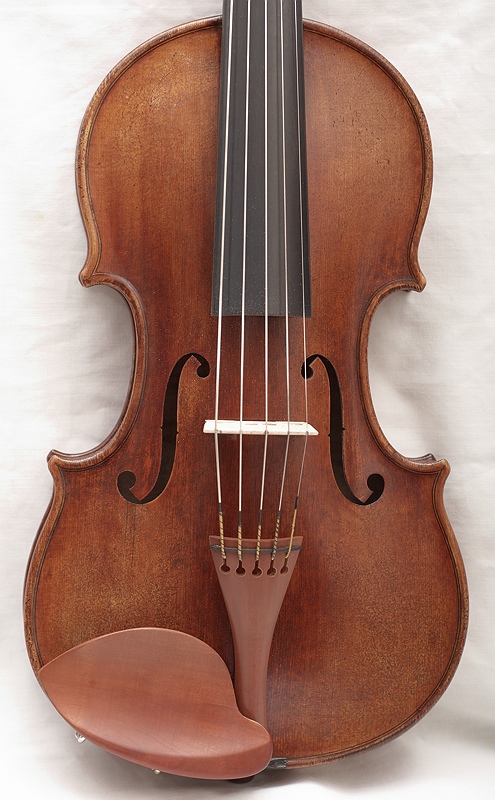|
Five-string Guitar (other)
Five-string guitar or five-string may refer to: Plucked * Baroque guitar, c. 1600–1750 * bass guitar, with five strings (also often with four or six strings) ** extended-range electric bass guitar, with five strings (also often with six or occasionally more strings) * five-string banjo (also often with four or six strings) * six-string guitar with one string removed, often the low "E", and retuned * vihuela, from Spain, Portugal, or Italy c. 1450-1550 (also often with six courses of strings) ** Mexican vihuela, c. 1800–present, often played in mariachi groups Bowed * a five string violin A five-string violin is a variant of violin with an extra string tuned below the violin's usual range. In addition to the G, D, A, and E strings of a standard violin, a five-string violin typically includes a lower C string. Violins with 6 or more ..., a modern version of a violin with an extra string (six and seven string electric violins also exist) See also * Guitar (disambiguat ... [...More Info...] [...Related Items...] OR: [Wikipedia] [Google] [Baidu] |
Baroque Guitar
The Baroque guitar (c. 1600–1750) is a string instrument with five courses of gut strings and moveable gut frets. The first (highest pitched) course sometimes used only a single string. History The Baroque guitar replaced the Renaissance lute as the most common instrument found when one was at home. The earliest attestation of a five-stringed guitar comes from the mid-sixteenth-century Spanish book ''Declaracion de Instrumentos Musicales'' by Juan Bermudo, published in 1555. The first treatise published for the Baroque guitar was ''Guitarra Española de cinco ordenes'' (The Five-course Spanish Guitar), c. 1590, by Juan Carlos Amat. The baroque guitar in contemporary ensembles took on the role of a basso continuo instrument and players would be expected to improvise a chordal accompaniment. Several scholars have assumed that the guitar was used together with another basso continuo instrument playing the bass line. However, there are good reasons to suppose that the guitar ... [...More Info...] [...Related Items...] OR: [Wikipedia] [Google] [Baidu] |
DADG Tuning
Each bass guitar tuning assigns pitches to the strings of an electric bass. Because pitches are associated with notes, bass-guitar tunings assign open notes to open strings. There are several techniques for accurately tuning the strings of an electric bass. Bass method or lesson books or videos introduce one or more tuning techniques, such as: * By ear to the sounded reference pitch of a piano, since a piano typically remains tuned much longer than a guitar, and electronic pianos are perpetually in tune. * By ear to the sound of a tuning fork or pitch pipe, which lets you get one pitch on one string correct. Then, use relative tuning (below) to adjust the other strings. * By ear to the sound of a guitar. On a four string bass guitar, its strings are pitched one octave lower than the four lowest pitched strings of a guitar. Tune them identically, without the octave interval, by pressing the 12th fret of each string on the bass. * By electric tuner, tuner app program on a ... [...More Info...] [...Related Items...] OR: [Wikipedia] [Google] [Baidu] |
Extended-range Bass
An extended-range bass is an electric bass guitar with a wider frequency range than a standard-tuned four-string bass guitar. Terminology One way that a bass can be considered 'extended-range' is to use a tuning machine mechanism that allows for instant re-tuning, such as the popular 'Xtenders' made by Hipshot detuners. When the player triggers the detuner, it drops the pitch of the string by a pre-set interval. A common use of detuners is to drop the low E to a low D. Detuners are more rarely used on other strings. Michael Manring uses basses with detuners on every string; this enables him to have access to a greater number of chime-like harmonics. Another way to get an extended range is to add strings. The most common type of bass guitar with more than four strings is the five-string bass. Five-string basses often have a low-B string, extending the instrument's lower range. Less commonly, five-string instruments add a high C-string, extending the higher range. Less commonly, t ... [...More Info...] [...Related Items...] OR: [Wikipedia] [Google] [Baidu] |
Five-string Banjo
The banjo is a stringed instrument with a thin membrane stretched over a frame or cavity to form a resonator. The membrane is typically circular, and usually made of plastic, or occasionally animal skin. Early forms of the instrument were fashioned by African Americans in the United States. The banjo is frequently associated with folk, bluegrass and country music, and has also been used in some rock, pop and hip-hop. Several rock bands, such as the Eagles, Led Zeppelin, and the Grateful Dead, have used the five-string banjo in some of their songs. Historically, the banjo occupied a central place in Black American traditional music and the folk culture of rural whites before entering the mainstream via the minstrel shows of the 19th century. Along with the fiddle, the banjo is a mainstay of American styles of music, such as bluegrass and old-time music. It is also very frequently used in Dixieland jazz, as well as in Caribbean genres like biguine, calypso and mento ... [...More Info...] [...Related Items...] OR: [Wikipedia] [Google] [Baidu] |
Six-string Guitar
The guitar is a fretted musical instrument that typically has six strings. It is usually held flat against the player's body and played by strumming or plucking the strings with the dominant hand, while simultaneously pressing selected strings against frets with the fingers of the opposite hand. A plectrum or individual finger picks may also be used to strike the strings. The sound of the guitar is projected either acoustically, by means of a resonant chamber on the instrument, or amplified by an electronic pickup and an amplifier. The guitar is classified as a chordophone – meaning the sound is produced by a vibrating string stretched between two fixed points. Historically, a guitar was constructed from wood with its strings made of catgut. Steel guitar strings were introduced near the end of the nineteenth century in the United States; nylon strings came in the 1940s. The guitar's ancestors include the gittern, the vihuela, the four- course Renaissance guitar, and the fi ... [...More Info...] [...Related Items...] OR: [Wikipedia] [Google] [Baidu] |
Vihuela
The vihuela () is a 15th-century fretted plucked Spanish string instrument, shaped like a guitar (figure-of-eight form offering strength and portability) but tuned like a lute. It was used in 15th- and 16th-century Spain as the equivalent of the lute in Italy and has a large resultant repertory. There were usually five or six doubled strings. A bowed version, the vihuela de arco (arco meaning bow), was conceived in Spain and made in Italy from 1480. One consequence was the phrase vihuela de mano being thereafter applied to the original plucked instrument. The term ''vihuela'' became "viola" in Italian ("viole" in Fr.; "viol" in Eng.), and the bowed vihuela de arco was to serve as a prototype in the hands of the Italian craftsmen for the " da gamba" family of fretted bowed string instruments, as developed starting in 1480. Their vihuela-inherited frets made these easier to play in tune than the rebec family (precursors of the " da braccio" family), and so they became popular for ... [...More Info...] [...Related Items...] OR: [Wikipedia] [Google] [Baidu] |
Mexican Vihuela
The Mexican vihuela is a guitar-like string instrument from 19th-century Mexico with five strings and typically played in mariachi groups. Description Although the Mexican vihuela has the same name as the historical Spanish plucked string instrument, the two are distinct. The Mexican vihuela has more in common with the Timple Canario (see: timple) due to both having five strings and both having vaulted (convex) backs. The Mexican vihuela is tuned similarly to the guitar. The difference is that the open G, the D and the A strings are tuned an octave higher than a guitar thus giving it a tenor sound or a higher pitch. The gauge of the strings and the order in which they are applied is important in producing a soft sound or a punchy bold sound when the instrument is strummed (the strum is called a mánico, and also references rhythmic patterns). The implementation of the vihuela to a mariachi is to give a duet of sorts with the Spanish guitar, one having a low tuning while the v ... [...More Info...] [...Related Items...] OR: [Wikipedia] [Google] [Baidu] |
Five String Violin
A five-string violin is a variant of violin with an extra string tuned below the violin's usual range. In addition to the G, D, A, and E strings of a standard violin, a five-string violin typically includes a lower C string. Violins with 6 or more strings may add a Low F, Low B♭, Low E♭, or a Soprano Violin High A (sometimes a High B). The five-string violin was created to combine the pitch ranges of the violin and viola. Bobby Hicks, a noted bluegrass fiddler, popularized the five-string violin in 1963, first showcasing his modification during a performance in Las Vegas. Due to the size limitations of a five-string violin, the low C string typically resonates with a slightly softer sound than the other strings. Five-string violas, normally tuned C, G, D, and A, and adding a High E string, have in the same tuning, but on a Viola body and don't sound as squeaky. Capable players may be able to compensate for these shortcomings with technique, and electric instruments help these i ... [...More Info...] [...Related Items...] OR: [Wikipedia] [Google] [Baidu] |




